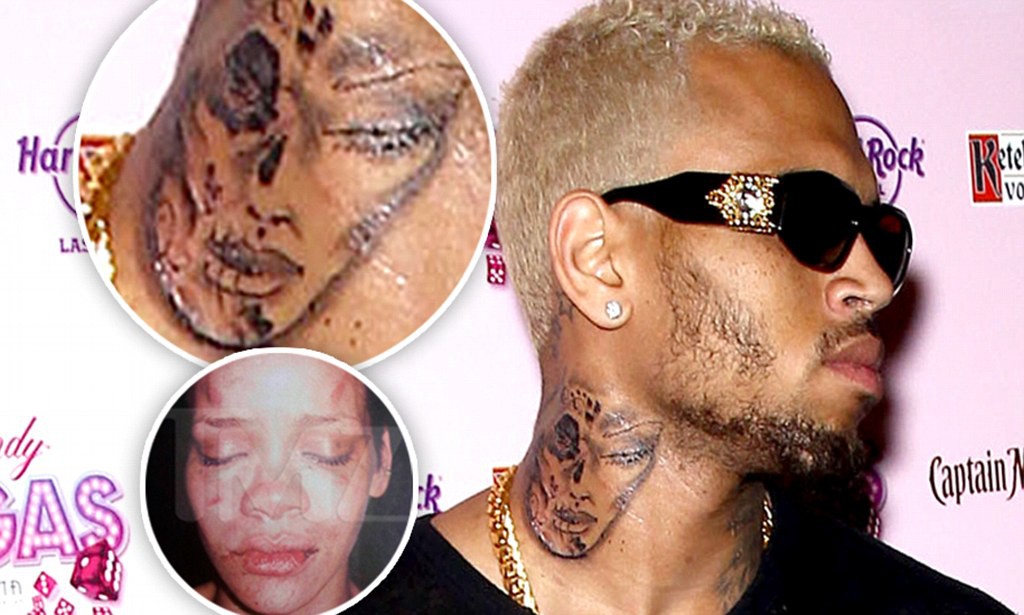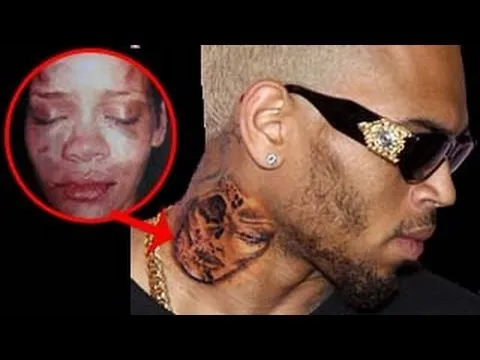In the constantly shifting landscape of celebrity culture, few stories attract attention like the personal choices of high-profile figures. Recently, Chris Brown, an artist known for both his immense talent and controversies, unveiled a new tattoo that has ignited widespread speculation and debate. Many are questioning whether this new ink is a depiction of an injured Rihanna.

Chris Brown, recognized for his extensive tattoo collection, shared his latest addition on social media: a striking image of a woman’s face that appears to show signs of injury, including a black eye and a bruised cheek. The resemblance has led many fans and critics to draw parallels to the infamous 2009 incident involving Brown and his then-girlfriend, Rihanna, during which images of a visibly battered Rihanna were widely circulated.
The reaction to Brown’s tattoo has been sharply divided. Some supporters argue that the tattoo is simply a work of art, potentially symbolizing a different narrative or personal story. Conversely, others view it as a provocative reminder of the past and a direct representation of Rihanna in her injured state, sparking outrage over its insensitivity.
Social media is abuzz with discussions, with many condemning the tattoo as a cruel reminder of domestic violence, while others defend Brown’s right to express himself artistically. Some suggest that the tattoo could be interpreted as an acknowledgment of his past mistakes, although this interpretation remains highly contested.
In response to the controversy, Brown’s representatives released a statement asserting that the tattoo is not intended to resemble Rihanna. They clarified that it draws inspiration from a Day of the Dead sugar skull design, celebrating Mexican culture, and that any resemblance is purely coincidental.
Despite this clarification, skepticism persists. Critics point to the striking similarity and the timing of the tattoo’s reveal as potential attempts to reignite public interest or provoke controversy.
This incident raises important questions about the relationship between art and personal history. Should public figures be held accountable for their artistic expressions, especially when they might reflect or glorify past wrongs? Or do they have the right to express themselves without being shackled by public opinion?

Chris Brown’s journey over the past decade has been filled with ups and downs as he works to rebuild his career and reputation. Incidents like this highlight the lasting repercussions of his past actions and the difficulties faced by celebrities trying to move beyond their histories.
For some, the tattoo may represent remorse—a permanent reminder of past transgressions. For others, it seems like a trivialization of a serious issue, evoking painful memories related to domestic violence.
As the conversation unfolds, one thing is clear: Chris Brown’s new tattoo has reopened discussions about his past and its impact on those affected by it. Whether seen as an artistic expression, a cultural homage, or a controversial statement, the tattoo serves as a reminder of the fine line between art and offense, particularly for figures with complex histories.
Ultimately, the discourse surrounding Brown’s tattoo is significant and perhaps overdue, highlighting the ongoing conversations about domestic violence and artistic freedom. As the world watches, it will be interesting to see how this latest chapter in Chris Brown’s life develops.